Abstract 1. All-printed magnetically self-healing electrochemical devices (Bandodkar...
1. Fully printed magnetic self-repairing electrochemical device
(All-printed magnetically self-healingelectrochemical devices)
Bandodkar et al. combined permanent magnet Nd2Fe14B particles (NMP) with graphite inks to demonstrate a low-cost, fast self-healing printed electrochemical device. The combination of NMP in the ink gives the printed circuit an amazing self-healing capability that can repair damage up to 3 mm at the same or different locations quickly (about 50 ms) without user intervention and external triggering. NMP has a permanent magnet property that is insensitive to the surrounding environment, enabling it to perform long-term repair of extreme damage independent of environmental conditions. This remarkable self-healing capability has not been reported for existing artificial self-healing systems. The new self-healing concept has strong applicability in real life and can be widely used in self-healing all-printed batteries, electrochemical sensors and textile-based wearable circuits. (Science Advances DOI: 10.1126/sciadv.1601465)
2. Defects in perovskite-halides and their role in solar cells
(Defects in perovskite-halides and theireffects in solar cells)
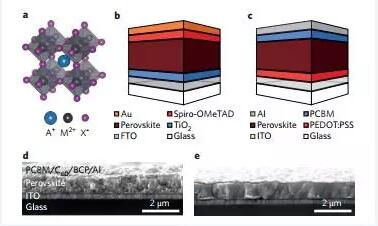
Solar cells based on halide-perovskite light absorbers have some unique properties that can help reduce global dependence on fossil fuels. These batteries use a rich raw material obtained by low temperature solution treatment to efficiently convert sunlight into electrical energy. Therefore, they have the potential to reduce costs compared to other photovoltaic technologies. Still, there are still several challenges that must be broken in order to fully exploit the potential of halide-perovskites. In view of the relatively soft nature of ionic solid materials, one of the challenges is to understand and control their defect structure. At present, the understanding of defect structures is limited, and this limits the energy conversion efficiency of these solar cells, making them unable to reach their thermodynamic limits. Petrozza et al. reviewed the origin and properties of defects in halide-perovskites and their effects on carrier recombination, charge transport, band alignment, and electrical instability, and provided insights on how to further advance. (Nature energy DOI: 10.1038/NENERGY.2016.149)
3. Microgel encapsulated single cells for drug delivery
(Deterministic encapsulation of single cells inthin tunable microgels for niche modelling and therapeutic delivery)
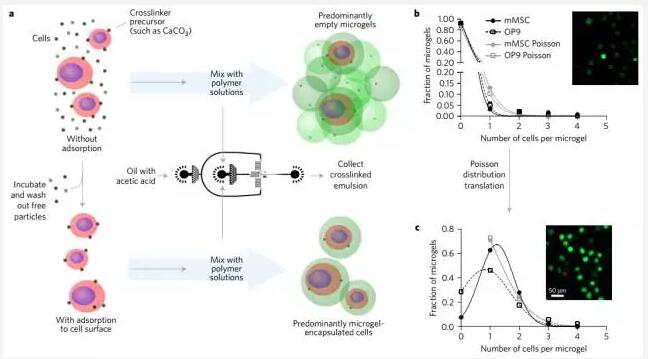
Encapsulation of cells in microscale hydrogels using prior art techniques typically results in very high polymer/cell ratios and lacks control of the mechanical properties of the hydrogel. Mao et al. introduced a microfluidic control method to encapsulate a single cell in an alginate layer of about 6 microns. This method increased the ratio of the microgel containing cells by a factor of 10 and the encapsulation efficiency by more than 90%. They also demonstrated mechanically controllable microgels that maintained cell viability in vitro for three days, and that gel stiffness and cell density have important implications for encapsulated bone marrow stromal cell assemblies and osteogenic differentiation of cells. The tunable hydrogel encapsulated individual cells will be used in a variety of tissue engineering and regenerative medicines. (Nature Materials DOI: 10.1038/NMAT4781)
4. Spiral edge states and local quantum Hall effect in graphene electron-hole bilayer
(Helical edge states and fractional quantumHall effect in a graphene electron–hole bilayer)
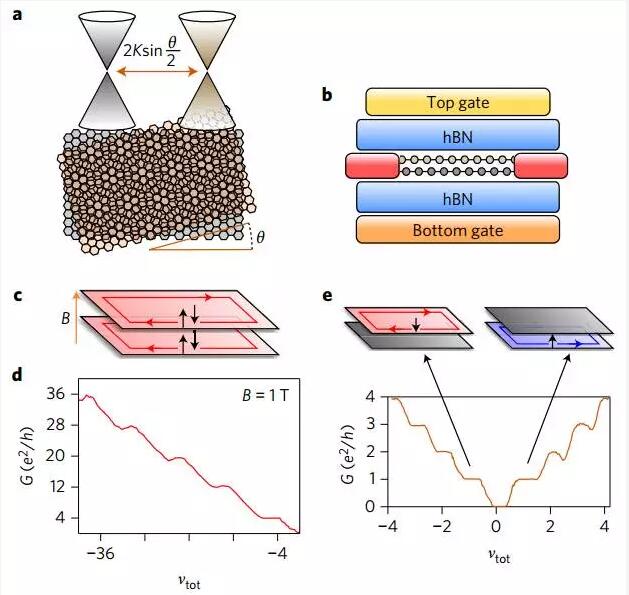
The spiral one-dimensional electronic system is a promising way to implement topological quantum state circuits. Sanchez-Yamagishi et al. demonstrated a general-purpose platform by combining the chiral opposite quantum Hall edge states in a graphene electron-hole bilayer under a medium magnetic field. With this method it is possible to modulate a spiral one-dimensional edge conductor in which the electron and hole layers separated by the tunable electric field have opposite transmission modes. These spiral conductors exhibit strong non-local transmission signals, and the opposite spin polarization of the back propagation mode suppresses backscattering. Unlike other methods for achieving a spiral state, graphene electron-hole bilayers can be used to construct novel one-dimensional systems that include local edge states. In fact, Sanchez-Yamagishi et al. were able to adjust the local and global edge states of the opposite direction of the two-layer device, paving the way for a one-dimensional spiral conductor with fractional quantum statistics. (Nature Nanotechnology DOI: 10.1038/NNANO.2016.214)
5. Detection and infrared communication of nitroaromatic compounds in wild plants
(Nitroaromatic detection and infrared communication from wild-type plants using plant nanobionics )
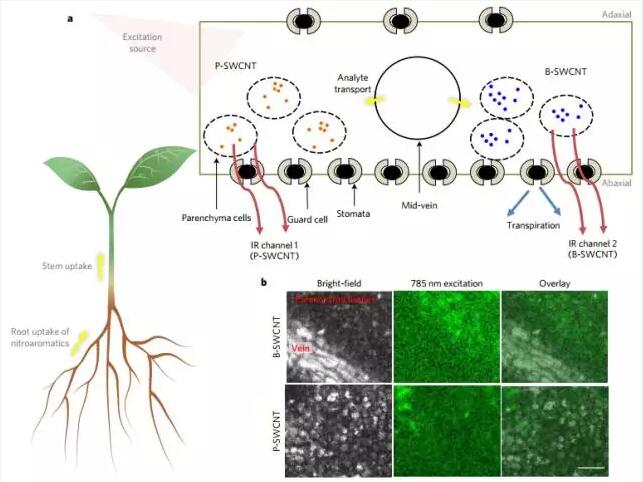
Plant nanobiology aims to achieve non-native function of plants by using specially designed nanoparticles embedded in plants. Wong et al. regulate the live spinach plant (spinach cabbage) as a self-energizing pre-concentrator and autosampler in environmental groundwater, and can send information to smartphones via an infrared communication platform. The plant uses a pair of near-infrared fluorescent nanosensors, single-walled carbon nanotubes (SWCNTs), conjugated to the peptide Bombolitin II to identify nitroaromatics. In addition, polyvinyl alcohol-functionalized SWCNTs are embedded in plant mesophyll as a fixed reference signal. The nitroaromatic compound as a contaminant is transferred from the roots and stems to the leaf tissue and accumulates in the mesophyll, resulting in a relative change in emission intensity. Real-time monitoring of the embedded SWCNT sensor also estimated the residence time of nitroaromatic compounds in roots, stems and leaves, 8.3 min (combined root and stem residence time) and 1.9 min/mm (in leaves). These results indicate that living wild plants have the ability to act as groundwater chemical monitors and communication devices. (Nature Materials DOI: 10.1038/NMAT4771)
6. Adjustable exchange coupling in magnetic topology-insulator/antiferromagnetic heterostructure
(Tailoring exchange couplings in magnetictopological --insulator/antiferromagnet heterostructures)
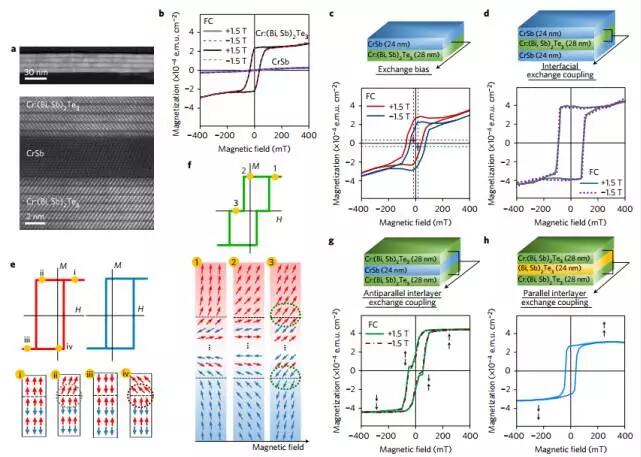
Magnetic topological insulators, such as Cr-doped (Bi, Sb) 2Te3, provide a platform for achieving time-reversed symmetric damage physics. By constructing a heterostructure, in which the antiferromagnetic CrSb exhibits Néel order and Cr doped (Bi, Sb)2 Te3 exhibits ferromagnetic order, He et al. realized the regulation of interface magnetic phenomena through manual regulation, and The geometric design of heterostructures and supercrystals demonstrates the role of antiferromagnetic exchange coupling in manipulating the magnetic properties of magnetic topological insulators. The results show that the proximity effect induces the interfacial spin structure modulation and establishes effective long-range exchange coupling by antiferromagnetic modulation, which significantly improves the magnetic order temperature in the superlattice. This work provides a new framework for integrating topological insulators and ferromagnetic materials, and provides a new way to achieve non-destructive topological antiferromagnetic spintronics. (Nature Materials DOI: 10.1038/NMAT4783)
7. Valley Polarization and Spin Polarization Landau Levels in Single Layer WSe2
(Valley- and spin-polarized Landau levels inmonolayer WSe2)

The electrons in the monolayer transition metal dichalcogenide are characterized by valley and spin quantum degrees of freedom. This makes it possible to explore new physical phenomena and anticipate new applications in the fields of electronics and optoelectronics. Theoretical predictions further show that combined with the Berry curvature effect and the strong spin-orbit interaction, an unconventional Landau level (LL) can be generated under a vertical magnetic field. In particular, this will support the chiral edge states of the valleys and spin polarization in the quantum Hall region. However, this unique LL structure has not been actually observed in transition metal dichalcogenides. Recently, Wang et al. observed complete valley polarization and spin-polarized LLs in high-quality WSe2 monolayers, and performed chiral analysis of optical reflectance spectra to detect inter-LL transitions in individual valleys, and inversion derived LL structure. (Nature Nanotechnology DOI: 10.1038/NNANO.2016.213)
8. Photoelectric effect based microelectronic devices
(Photoemission-based microelectronic devices)
Most modern microelectronic devices rely on carriers in the semiconductor. Therefore, the performance of these devices is often limited to the properties of natural semiconductors such as bandgap and electron velocity. Replacing a semiconductor channel with a gas or vacuum channel may increase speed, wavelength, and power. However, releasing electrons in a gas or vacuum in an actual microelectronic device is very challenging. This usually requires heating, applying high voltage or using a short wavelength/high power laser. Forati et al. realized the photoelectric effect by the interaction of a tunable resonant surface and a low-power infrared laser, which enabled the normal operation of microelectronic devices such as effect transistors, switches and tuners. (Nature Communications DOI: 10.1038/ncomms13399)
This article is authorized by the new material online (micro signal: xincailiaozaixian), if other media need to reprint, please contact the new material online small series (micro signal) Automatic Faucet
Bestware Automatic Faucet brings the fine design and high technology together in all areas of the product process beyond Pull Out Faucet , Commercial Faucet and Commercial Kitchen Faucet. With extensive range of components, we can offer a large selection of both standard Pre-rinse Faucet and custom Basin Tap units as well as flexible combination. Stainless steel is 100% recyclable and is comprised of over 60% recycled material, Bestware faucets are the perfect solution in the commercial and industry for better water quality and the circumvention of the development of deleterious substances and bacteria. No plating, no oxidizing, no rust, lead free.
Automatic Faucet,Automatic Water Tap,Automatic Water Saver Tap,Automatic Taps
Bestware Hardware Production Co., Ltd. , https://www.bestwarefaucets.com
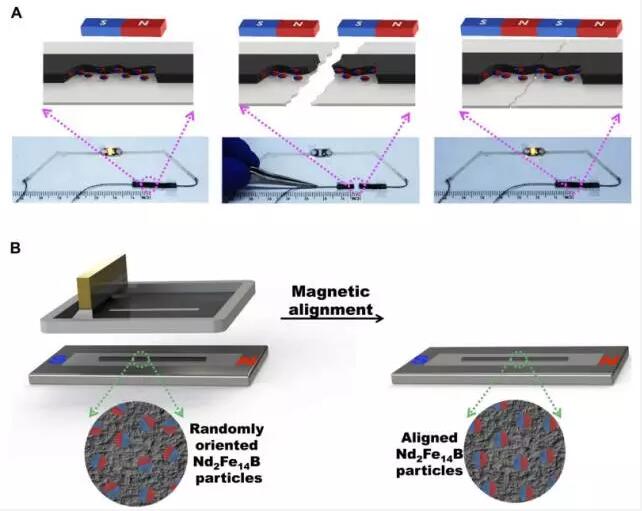






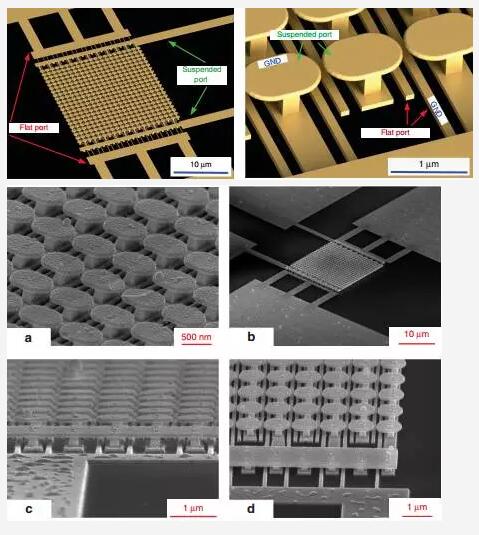
![<?echo $_SERVER['SERVER_NAME'];?>](/template/twentyseventeen/skin/images/header.jpg)